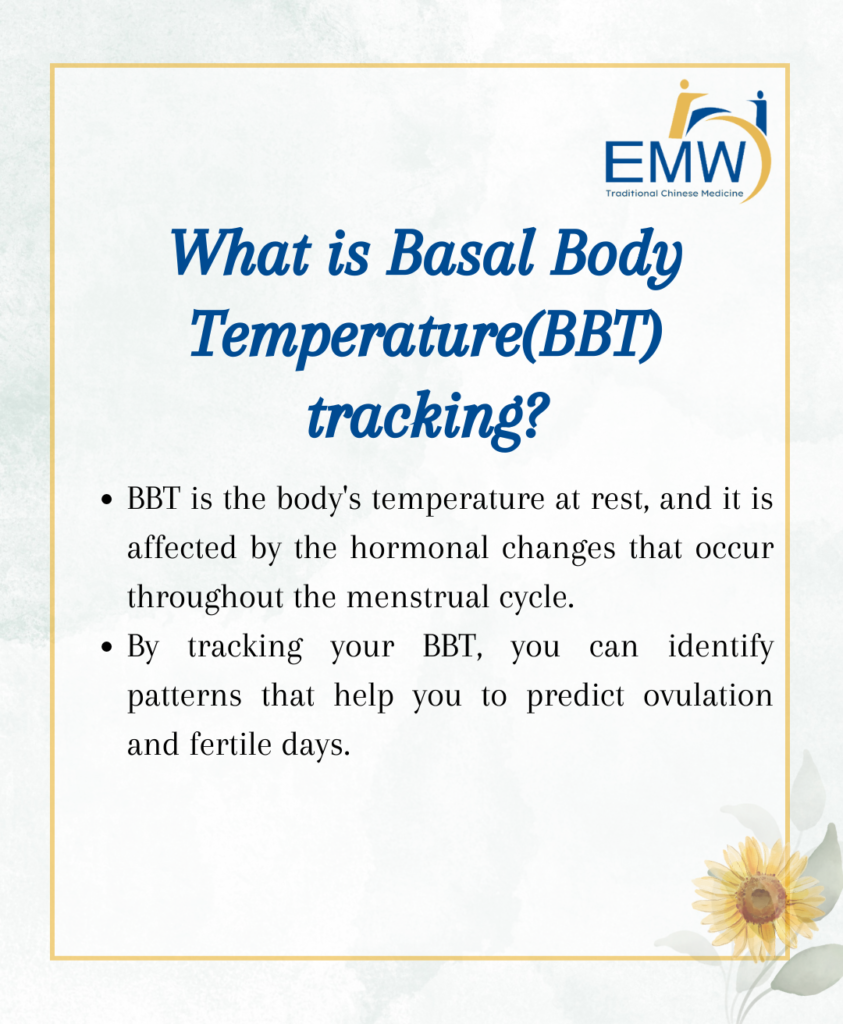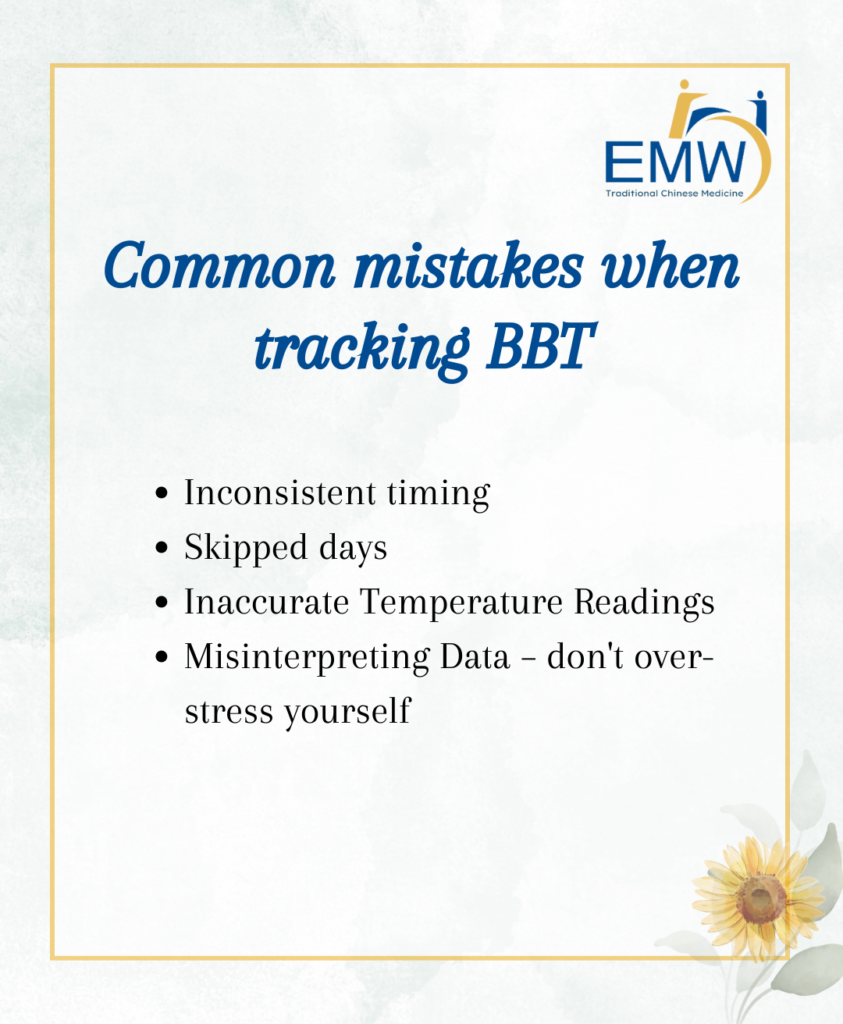Basal Body Temperature & Fertility: What's the link
Basal body temperature (BBT) tracking is an important tool for fertility tracking and natural family planning. The basal body temperature is the lowest body temperature that is achieved during rest, usually during sleep. Tracking your basal body temperature can help you determine when you ovulate, which is when you are most fertile and most likely to conceive.

How Does Basal Body Temperature Tracking Work?
Throughout your menstrual cycle, your hormone levels fluctuate, which can cause changes in your body temperature. After ovulation, the hormone progesterone is released, which causes a slight increase in body temperature. By tracking your temperature over time, you can identify the temperature shift that occurs after ovulation, which can help you pinpoint your fertile days.
How Can Basal Body Temperature Tracking be Used for Natural Fertility Family Planning?
If you’re trying to avoid pregnancy, tracking your basal body temperature can help you identify your most fertile days so you can avoid sex during that time. Conversely, if you’re trying to conceive, tracking your basal body temperature can help you identify the best time to have sex to increase your chances of conception.

Tips and Tricks for Getting Started with Basal Body Temperature Tracking & Fertility
Invest in a Basal Body Thermometer: Basal body thermometers are designed to measure slight changes in body temperature accurately. These can be purchased online or at your local pharmacy.
Take Your Temperature at the Same Time Every Day: Take your temperature at the same time every morning, before you get out of bed or start any physical activity.
Track Your Temperature Daily: Keep a record of your daily temperature readings on a chart or a fertility tracking app.
Interpret Your Data: Look for patterns in your temperature readings to identify ovulation and your fertile window. After a few months of tracking, you should be able to identify the days when you’re most likely to conceive.
Combine Basal Body Temperature Tracking with Other Fertility Tracking Methods: Basal body temperature tracking can be combined with other methods like cervical mucus tracking or ovulation predictor kits for a more comprehensive view of your fertility.
By following these tips and tricks for basal body temperature tracking, you can gain a better understanding of your menstrual cycle and increase your chances of conceiving or avoiding pregnancy naturally.

How to Interpret Your Basal Body Temperature & Fertility
The key to interpreting your BBT is to look for a sustained temperature increase for three or more days. This increase indicates that ovulation has occurred, and you are now in your fertile window. If you are trying to conceive, this is the optimal time to have intercourse. Conversely, if you are trying to avoid pregnancy, this is the time to abstain from intercourse.
It’s important to note that ovulation doesn’t always occur at the same time each cycle, and your BBT can be affected by factors like stress, illness, and travel. Therefore, it’s essential to track your BBT over several cycles to identify patterns and predict ovulation accurately.
Identifying Patterns in Your Basal Body Temperature & Fertility
By tracking your BBT over several cycles, you can identify patterns and predict ovulation more accurately. Here are a few patterns to look out for:
Pre-ovulation Dip: A small dip in temperature just before ovulation is a common pattern.
Post-Ovulation Rise: A sustained rise in temperature for three or more days indicates ovulation has occurred.
Triphasic Pattern: Some women experience a second temperature increase around seven to ten days after ovulation.
Luteal Phase Defect: A short luteal phase (the time between ovulation and the start of the next menstrual cycle) can indicate fertility issues and make it harder to conceive.
Understanding the numbers and patterns of your BBT can provide valuable insight into your menstrual cycle and help you plan for natural family planning. By tracking your BBT over several cycles, you can identify your fertile window and increase your chances of conception or avoid pregnancy naturally.
Common Mistakes

Basal body temperature tracking is a simple and effective way to track ovulation and fertility, but there are some common mistakes that can lead to inaccurate readings and flawed data. Here are some of the most common mistakes to avoid when tracking your basal body temperature:
Inconsistent Timing: One of the most important factors in accurate basal body temperature tracking is taking your temperature at the same time every day. This means taking your temperature as soon as you wake up, before getting out of bed, eating, or drinking anything. If you take your temperature at different times each day, it can be difficult to identify patterns and fluctuations in your readings.
Skipped Days: Consistency is key when it comes to basal body temperature tracking, so it’s important to take your temperature every day, even during your period. Skipping a day or two can disrupt the pattern of your readings and make it harder to identify ovulation.
Inaccurate Temperature Readings: To get an accurate basal body temperature reading, you need to use a reliable thermometer and take your temperature correctly. Using a thermometer that is not calibrated properly or taking your temperature incorrectly (such as by breathing through your mouth) can lead to inaccurate readings.
Misinterpreting Data: Interpreting basal body temperature readings correctly is crucial for identifying ovulation and fertile days. However, it can be easy to misinterpret data or see patterns that aren’t really there. For example, a slight dip in temperature doesn’t necessarily mean you’re ovulating, and a temperature spike doesn’t always indicate pregnancy.
To avoid these common mistakes, here are some tips for accurate basal body temperature tracking:
Establish a Routine: Take your temperature at the same time every day, ideally first thing in the morning before getting out of bed.
Use a Reliable Thermometer: Use a basal body thermometer that is accurate and calibrated properly.
Record Your Data: Keep a record of your basal body temperature readings, either on paper or in a tracking app, to identify patterns and track changes over time.
Understand the Data: Take time to understand how to interpret your basal body temperature readings correctly to identify your ovulation window and fertile days.
By avoiding these common mistakes and following these tips for accurate basal body temperature tracking, you can increase the accuracy of your data and gain a better understanding of your fertility.

Understanding Basal Body Temperature & Fertility in TCM
Traditional Chinese Medicine (TCM) has been used for thousands of years to improve fertility and reproductive health. One of the tools that TCM practitioners use to assess fertility is basal body temperature (BBT) tracking.
TCM views fertility as a delicate balance between yin and yang energies within the body. Yin represents the nourishing, cooling, and receptive aspect, while yang represents the active, warm, and assertive aspect. For optimal fertility, there must be a balance between these two energies.
TCM practitioners believe that the menstrual cycle is a reflection of this balance, with the follicular phase (pre-ovulation) representing the yin phase and the luteal phase (post-ovulation) representing the yang phase. By understanding the balance of yin and yang energies, TCM practitioners can provide personalized treatments to help improve fertility outcomes.
BBT and TCM Fertility
BBT tracking is a valuable tool for TCM practitioners to assess fertility and identify patterns of imbalance. In TCM, a healthy BBT should be stable, indicating a balance of yin and yang energies. However, if BBT fluctuates or is consistently low or high, it may indicate an imbalance.
For example, a consistently low BBT may indicate a deficiency of yin energy, which can cause irregular menstrual cycles, a lack of cervical mucus, and difficulty conceiving. In contrast, a consistently high BBT may indicate an excess of yang energy, which can cause irritability, anxiety, and premenstrual symptoms.
By tracking BBT over several menstrual cycles, TCM practitioners can identify patterns of imbalance and develop personalized treatment plans to improve fertility outcomes. TCM treatments may include acupuncture, herbal remedies, dietary changes, and lifestyle modifications to balance yin and yang energies and improve reproductive health.
Conclusion
TCM provides a holistic approach to fertility, focusing on the balance of yin and yang energies within the body. BBT tracking is a valuable tool for TCM practitioners to assess fertility and identify patterns of imbalance. By understanding the patterns in BBT, TCM practitioners in EMW can develop personalized treatment plans to improve reproductive health and increase the chances of conception. If you are struggling with fertility, consider consulting a TCM practitioner to explore how BBT tracking and other TCM treatments can help.
Our Physicians
Principal TCM Physician
- M.Med(TCM Gynaecology)
- B.Sc(Hons) Biomedical Sciences
- Dip. Naturopath
- Ayurvedic Therapist(500hrs)
- Registered TCM Physician (Singapore MOH)
Senior TCM Physician
- M.Med(TCM Acupuncture & Moxibustion)
- B.Sc(Hons) Biomedical Sciences
- Certified Aromatherapist
- Registered TCM Physician (Singapore MOH)
TCM Physician
- M.Med(TCM Gynaecology)
- B.Sc(Hons) Biomedical Sciences
- Registered TCM Physician (Singapore MOH)
TCM Physician
- B.Med(TCM)
- B.Sc(Hons) Biomedical Sciences
- International Board-Certified Lactation Consultant (IBCLC)
- Registered TCM Physician (Singapore MOH)







